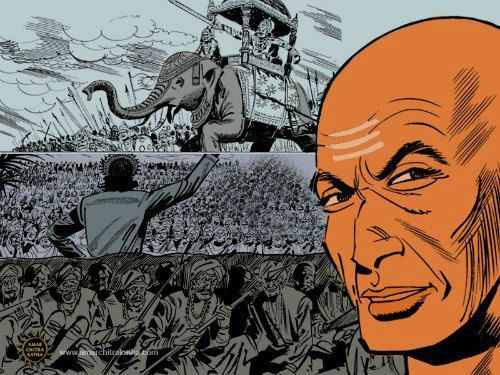Shreyas Bhave's Blog
January 25, 2017
Anthem
[image error]
Because it is 26th January today, and the Supreme Court recently passed this resolution I remembered an event in my life from half a decade ago.
I was attending a trip which had been organised by my coaching class for my engineering entrance exam. We were visiting a special school, for special children, which is a common metaphor for the mentally retarded. It was quite an unusual choice for a trip, but our coaching class was unusual in quite some ways.
Five minutes into the campus and I was bored already. We were made to line up for a prayer that was about to begin and strictly asked to maintain complete silence. Already disgruntled 18-year olds that we were, We soon began to lose patience. So Naturally, my mind was in a very biased state and I began to look at what was happening around me in a very bad light.
I watched as the teacher-volunteers brought the students one by one, holding them by their hands. It is quite easy to recognize mental retardedness by facial expressions. Those looking into nothing eyes, Those blank stares, faces devoid of any emotion and yet with an air of naughtiness. I watched as the ‘special children’ kicked, shouted, pulled and refused to be organised into lines.
The question ringing in my head was this: ‘Why was this institution, which was occupying quite a large area, which could easily have housed a real school was wasting its time and money, on these special children, who were always going to remain special (Autism & Mental retardedness are incurable) Why were they wasting resources like land, manpower & Money on these children who were never going to contribute even a little bit to the development of the world?
The prayer got delayed as the teachers-volunteers finally managed to squish them into lines. It began by the National Anthem and everyone became silent. As we began, the teacher-volunteers shifted to attention, letting go of the special children. Then, one of them shouted loudly, a loud languageless shout, and the chaos began. Some of the special children began to jump, some joined their voices in the shout. Two or three even went as far as sitting down, and one literally lay flat on the grass below. Almost all of them were covering their ears, not liking the loud drumbeats accompanying the anthem and by the time we reached ‘Jay He’, almost all of them were shouting.
In eyes of the society, what they did was wrong, but no one said anything because the children don’t understand. As the National Anthem ended, I git the answer to the question I had in mind. Why we help mentally retarded children is not a social help or support, but rather a form of worship. It is a worship to that human spirit, which these children possess, the spirit to not acknowledge rules and do only what one’s own mind desires. And in today’s so-called civilized society, where this spirit has become rare, we still can’t help but be in awe when we see it being displayed by these children. And that is why they are special, and that part of them is what all men should respect.
Content with the answer, I joined my hands for the next prayer…


January 18, 2017
Why it should have been the Ashoka Stambh, instead of the Shivaji statue!
[image error]
I first thought about Samrat Ashoka when I visited Junagadh, to climb the famed Girnar Pilgrimage, way back in the winter of 2012. I mean that was not the first time that I ever heard of him, or knew that he had existed or read about him. Simply, it was the first time that I actually felt like he was worth a thought, and I have not stopped thinking about him ever since.
Ashoka was a great ruler, born more than two millennia ago. His 24 spoke blue Chakra flies on our National flag today, as a proud symbol of our country. The Far-East calls Buddhism its main religion, today, because of him. The list is endless. The tale of his life was so wonderful & Awe-inspiring, that it inspired me to write a 3 book series based on his life called the Ashoka trilogy.
But let us take a pause. It’s been many years since 2012. Why am I going back to all that now, four years later? Well, there is a reason. And the reason is the Controversial Shivaji statue which has been hogging the limelight in newspapers since the last month. There have been supporters for the issue, and staunch reactionaries about the same. But where does Ashoka figure in all of this?
Like I said, Ashoka was a great ruler. But surprisingly, it took me 17 years of my life to really think about him and it required an incentive. I received that incentive while visiting the famous underground Buddhist caves in Junagarh, a marvel of architecture from those times, and I had to wonder. Who is this King who made all of this possible? The architecture of the caves has to be seen to be believed, and the fact that they were built in the third century B.C. makes them all the more splendid. And why was he building such massive structures so far away from the center of his actual kingdom, which was in the Far East, in present day Bihar?
Why did it take me 17 years of my life to understand Ashoka’s greatness? Therein lies the catch. Unfortunately, this incentive that I received in the seventeenth year of my life at Junagarh could not be given to me by the education system I studied in, the movies and TV shows, that I watched in my childhood nor the books that I had read until then. And trust me, I read a lot of books. The coverage of Ashoka in present day Art, Literature & Media is close to Nil.
When the News of the Statue of Chhatrapati Shivaji broke out in the papers, I could not help but think: It should have been a monument for Ashoka.
And in no way, am I dwarfing the greatness of Chhatrapati Shivaji with these thoughts. I am a proud Maharashtrian myself and I know that much of the freedom in our society today has to do with what Shivaji Maharaj did back in the 1600s. I even have a planned Novel series based in his empire for the future. I’m not saying that Chhatrapati Shivaji wasn’t great. All that I’m saying is that Ashoka was greater. If Shivaji is Narayan Murthy, Ashoka is Bill Gates. If Shivaji is Nelson Mandela, Ashoka was Mahatma Gandhi. If Shivaji was Atal Bihari Vajpayee, then Ashoka was Honorable PM Narendra Damodardas Modi.
Moreover, the Chhatrapati is much more alive than Ashoka in our culture even to this day. We study about him in our history lessons at school. We watch his persona invoked in Movies and fortunately, India has no lack of historians and novelists who have since long penned countless immortal treatises on Shivaji’s life. He is very well alive in chants and calls of the common people as well as the political parties. The forts he built and the great feats he accomplished are still very alive to this day in the rolling hills of Sahyadri. However, Ashoka, in our Culture is non-existent!
People will argue with me saying that the two can’t be compared at all. Shivaji lived for fewer years, inherited almost nothing and had to build everything himself. However, such is the case with any two comparisons in the world, for no two persons or things ever have the same background. However unfair it is, what should actually matter after their death is the legacy that they created and not what they could have created.
And with all this in mind, we come to our final point, of the statue. What is to be thought of when investing such large amounts in a monument of this scale is the long term goodwill that it will produce. The ROI from Tourism is to be neglected in this. If the government wanted to build a mega-structure for attracting tourists, it was better off building another Burj Khalifa instead. The purpose of a statue of a historical figure is something entirely different and noble.
The purpose of a statue of a historical figure is something entirely different and noble.
When Samrat Ashoka spent millions in those times to create his Inscriptions, Stupas and Caves all over the Subcontinent of which the Junagadh caves were one, he was doing a similar noble investment for future goodwill of the public. It was not a mere PR Exercise. He was already a much-loved ruler. He did it to instill a sense of unity in the people of the Subcontinent. India was not a country then, just a land of fragmented kingdoms, which Ashoka managed to unite under one empire. true, he fought wars to do it, but once it was done, He disbanded the army and ushered in a Golden Era of Eight long decades. The fact that we are a country today, goes in some portions to the acts of this legendary Emperor, of two thousand years ago. Ashoka stood for unity and not for division. He stood for progress and not for war. And above all, he stood for freedom and not slavery.
So what should be the purpose of a 4000 Crore statue? For a country of 1.25 Billion, the purpose can be two-fold. Either the statue can be a symbol of what the country stands for. Like The statue of Liberty in New York which resonates with one of the values over which the US Constitution was written. Or it can stand to inspire the populace to its everlasting persona, in the likes of Christ the Redeemer of Rio.
And that is where a monument of Ashoka could have served both the purposes. An Ashoka Pillar, carved over the Indian Ocean could have stood for the riches of this Country from Ancient times and the bright future that awaits our people. Moreover, it could have invoked in people a realization of our Ancient Heritage and the values of Peace, Technological innovations and Change that Ashoka stood for. Such a statute could awaken the Ashoka hidden deep within each of us. And our Scholars know all this and still, they will choose the statue of Shivaji because it will give them better returns in the next elections.
And that is where, unfortunately, we go wrong. And in the Heavens, Chhatrapati Shivaji Maharaj sheds a tear.


October 21, 2016
The Problem with ‘Art’

Ever since I can remember, people have been admiring art from afar and frowning at it from near. They have been visiting exquisite museums to ogle at the Mona Lisas and the Last Suppers, but throw a tantrum when their own sixteen-year-old girl decides to pursue a course in BFA.
They have been visiting exquisite museums to ogle at the Mona Lisas and the Last Suppers, but throw a tantrum when their own sixteen-year-old girl decides to pursue a course in BFA. They have been attending rock concerts, paying horrendous amounts of money for the tickets, but struggle to reach for their wallets when their ten-year-old gets a crew cut and asks for a guitar. And they are always the first to order the latest bestseller novel from Amazon but frown when their primary school going son innocently states that he is going to be an author.
And all of them have only one thing to say while reprimanding the young ones and bringing them towards (what they feel) is the right track:- “It’s only good as a hobby. Art has no future!”
Having gone through parts of this treatment, That statement got me thinking. What exactly it is about ‘Art’ in general that makes the grown-ups (Who obviously have our best interests in mind) go haywire.
Before we begin, Let me clarify I have to agree with them on one important point: If looked upon from a probabistical point of view, only about 1% of artists become truly successful and the others often struggle to make ends meet. So From a parent’s perspective, that is a perfect argument against letting his progeny pursue the right-brain dominant fields in the world. That if you dare to do that, then you chance of success is almost 1%
Well now that argument is taken care of, let us do one massive paradigm shift.Every year, about 1200000(12 Lakh) students appear for the prestigious IIT entrance exams in our country. OF them, only 9000 manage to get in. Mathematically, that is a success rate of 0.75% < 1%. Now, get me one set of parents you know who will not have encouraged their kids to try for the IITs saying that: Chances of failing are 99%. (Replace IIT’s with any other premier institutes for keeping generality.)
I don’t see that how come it was that parents who were so optimistic when thinking bout the IIT Entrance exams suddenly became so cynical when art was considered. So on a subconscious level, I began to think that this success rate was not what made the parents scowl at pursuing young artists.
Then what is it that evokes their displeasure? Is it competition? I don’t think so. About 15 lakh engineers pass out in our country each year. About 50000 Doctors are produced and 3 lakh MBAs accompany them. Now compare these numbers with persons who are writing a manuscript with the hope of getting published or those who are jamming away endless night, with the aim of producing a music record. And the scale inversely in favour of the professionals. Today, being an engineer or an MBA will make you face more competition than if you decide to pursue filmmaking.
So what is this problem with ‘Art’? What makes success as an artist much harder than as a professional when the simple flow of logic is stating otherwise?
It is at this point, that i get it. A parent will not want their daughter to be an artist due to the same reason why he won’t want her to be a bar-dancer.
Let me explain the meaning of the above statement. Unlike professionals, your success as an artist depends on one nd one thing only: The number of people who love you. The more, the better. This is totally different for professionals. You may call a certain doctor an asshole behind his back but still stand in line to get to his clinic because of his wonderful diagnosis. But you will never listen to the music of a composer you hate or read the book of an author you are just disgusted about. And that is what i think is the problem of ‘art.’
As an artist, you can never be sure of how your creation is going to be taken by your audience. Will they love it? OR will they hate it? An artist can never conduct market research. HE can never predict whether what he/she is going to create is going to be loved or not. And it is because of this ineherent uncertainty in the lives of artists that causes those stern looks from the Mom when her little daughter paints the wall or the little boy uses the cuttlery as his drums.


October 10, 2016
What is a bussiness

After completing my graduation in Electrical Engineering in 2016, I started a LLP firm catering to the needs of the end users of EHV Switchgear products in my local region. Much oblivious and high on hubris due to the same, I started telling my circle that I had started a bussiness. It took me a while to realize how wrong I was.
But before we move into all that, let us come to the question that made me realize the error of my ways in the first place. What exactly is a bussiness? In this age of materialism and entreprenneuship, the word ‘bussiness’ comes into our life almost everyday. We read about it in newspapers, we see it on social media, we even learn about it in our collegges. But do we really understand its meaning?
Wikipedia defines ‘Bussiness’ as an organizational entity involved in the provision ofgoods and services to consumers for the purpose of generating a profit. The bulk of our understanding of this word is based around this very definition. But in the modern age of innovation and Technology, this conventional definition has ceased to give the meaning that must really be associated with the word.
Coming back to my own story, After telling everyone that I had started a bussiness, I set about starting the key activities that would generate a profit for me. What I had planned to do was provide a service to end users of a certain product. So the first step was to obtain the associated technology (read equipments & tools) and the expertise(Read Know-how) to be able to deliever the service which I had planned. So I ended up partnering with an experienced individual, 20 years older to me who was well-versed in the workings of this product and brought both of the above necessary things to the table.
The next step was searching for customers who would be willing to pay me for the services I was proposing to offer. So I set out on a statewide tour, sort of cold-visiting to my potential clients, (Read cemement plants, Steel plants, Textile parks) telling them about the services I could offer, The machinery I had for the same and the fees I was willing to charge.
Luckily, soon enough, orders started pouring in. The only competitors present were the actual manifacturers of these products whose attitude towards after sales servcie was charge more-and be assholes. I started executing thsoe orders and moey started coming in. And one again, i stated telling my circle that I now had a successful bussiness.
But did I really have one?
My ususal routine for each bussiness transaction used to be like the following. First, I would visit a customer & give him an offer ( Read works offer.) If the coustomer was convinced, He would assign the wok to me. I would take my equipments & my bussiness partner, go to the site where the poduct was lrocated, camp there for two days and provide the service (Read Repairing & Overhauling of EHV Switchgears, with replacement of spares) After the work was complete, I would get a promise from the customer of payment within the next 30 days, and move on with the same cycle.
And Beleive me or not, I was earning a profit margin of upto 20% after taxes and interest for the same. It was a very good margin, conisdering that bank interest rates itself are 16%. and that is why it had gone to my head that I was running a great bussiness.
But the whole sand castle came tumbling down when I sat down with one of my role models and mentors whom I had met early in collegge. After listening to my story, he smiled and told me that i was wrong.
And just like that, I realized that I was not running a bussiness.
Untill that point, I was treating the word ‘bussienss’ the same way wikipedia treats it, which is not a way it should be treated. I was considering myself a bussienssman, when all i was doing was being an individual who had actively taken charge of his own income.
I was trading my time for money and misunderstanding it as running a bussiness. It was the same as working in a job, or being a pofessional like a individual practising doctor, Lawyer or Chartered Acountant.
That was whn I realized that I had to change my working model. And convert it into what would be an actual bussiness model.
Immediately, I reacted by contacting liasoning agents in various towns who could generate orders for me by meeting new customers and take a slice of percentage on the top for the same. With the help of my much experienced partner, I found technicians willing to conduct works of oevrhauling and repairing on behalf of us in return for fixed fees, but could not run an enterpise like us either because they were in a job somewhere else or because they didnt have the gumption or the credit for it. After doing this, I reduced the work on my head to just two simple things: 1]Managing the technicians on pay per job basis and coordinating with the liasions 2] Purchasing the required spares for each job from vendors and delievering it to the technicians. I put two salaried employees (Read freshers), trained them for the same and then let them do their job.
After doing all this, my profit margin dropped substantially, almost to 5% after taxes. But now, what I had created was an automated system which was totally independent of me, which could go on working without even an ounce of my involvement and still generate money for me and my partner.
“Now, you’re a bussinessman.” My mentor shook hands with me next time we met. “Tell me what are you going to do next.”
And then, I started looking for opportunities to start another venture, one an allied bussiness supporting the first one, and the other, a traffic generating online blog. I also started getting free evenings to complete the manuscripts for my next books (Yeah, I’m also an author :p Google me)
And now, when i will tell my friends that I am running a bussiness the next time we meet, I would actually be speaking the truth.
Jay Hind & Goodbye.


July 2, 2016
Book Review- Prince of Patliputra
Title- Prince of Patliputra
Author- Shreyas Bhave
Pages- 382
Publisher- Lead start publishing
Genre- Fiction
RATINGS–
Cover- 3/5
Blurb- 4/5
Writing Style-4/5
Overall-4.5/5
BLURB-
272 BC BHARATHVARSHA, LAND OF THE ARYAS Samrat Bindusar, son of Chandragupta and the second Samrat Chakravartin of all the Aryas rules over the massive subcontinent from his holy seat in Patliputra. Almost five decades ago, his father had laid the wealth and glory of the past has subsided. As the Samrat’s health continues to decline due to an unknown illness, problems are arising all over his realm. There is infighting and rebellion. No clear successor to him is present. Ninety nine of his sons stand in line waiting for his throne. Bharathvarsha needs a Chandragupta once again. And it needs a Chanakya too. Can the young Prince Asoka, who is the least favorite son of the Samrat, fill the boots of his grandfather? Can Radhagupta…
View original post 243 more words


June 17, 2016
Book Review: The Prince of Patliputra
Here’s my review for the book titled The Prince of Patliputra written by Shreyas Bhave.
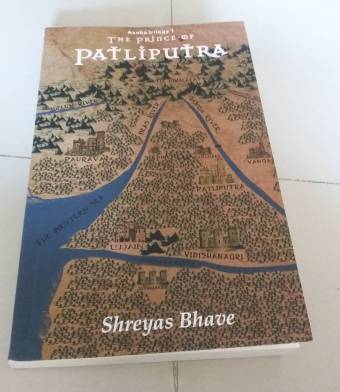
To start, let me take a moment to appreciate the book cover. It is a map of Akhand Bharat that Maurya used to rule. The map on cover successfully makes top-of-the-mind impact and makes to you want the book. Cover quality and binding of the book is good, no complaint regarding it. I took 10 days to read the book but still it is as new as it was when I received.
Now thanking the author himself for finding me and sending me the autographed copy of the book. This is a generous act by a 21 years old debutant author. Really appreciate it!
The story of the book starts with a prologue that is absolutely brilliant. It is nicely and smartly written one which will make you turn the pages quickly. The list of…
View original post 527 more words


March 27, 2016
EXCHANGING WORDS WITH SHREYAS BHAVE
Shreyas is a 21 year old guy currently pursuing his B.Tech in Electrical Eng. from VNIT Nagpur. His love for history since his childhood prompted him to write his take on the story of Asoka who was…
Source: EXCHANGING WORDS WITH SHREYAS BHAVE


The Spies in the Maurya Empire : And their modern day counterparts?
While researching for my novel, The Prince of Patliputra, Arthashastra by Kautilya was the first book that I turned to. It is claimed that this book was written during those times (i.e. 3rd century BC) and I thought it would give me a good feel of how the world was,during those times.
Arthashastra is a great book and much has been said and written about it from times immemorial. I do not want te dwell into the analysis of the book. Today, I merely want to focus on Kautilya’s advice in it about the intelligence(spy) system of a kingdom.
Spy system played a very important role in the Maurya Empire. Kautilya in his treatise has advised exactly, the kind of spies that should be recruited and groomed. He has even divided them into five categories, each playing a different role. Much to my surprise, in the current political scenario of our country, I found strikingly similar figures that would fit right into the mould that Kautilya has advised.
Now, these similarities must be taken in a lighter vein and I hope that all it will breed is a laughter or a smile. With that being said, let us begin.
These were 5 Types of Spies that were appointed in the Mauryan Empire as drafted by Kautilya/Chanakya in The Arthashastra:
Spy 1] – Fraudulent Disciple –Student (kápatikachhátra)
According to Chanakya, the chief of intelligence services should appoint students (especially those involved in intellectual activity, teaching or in research activity) from a university. These intellectual students must be argumentative, brash and skilled enough to provoke others. Sometimes, these students should deliberately cause an uprising in the university to judge the mood of the students of the institution about the ruler King.

Spy 2 – Ascetics – Recluse (Udásthita)
Ascetics who were known for their knowledge and intelligence were favored for the intelligence activity. Once they were chosen, they would then form a network of spies. The chief of this unit was given ample land and resources from the state so that he could carry out their activity without any issues.
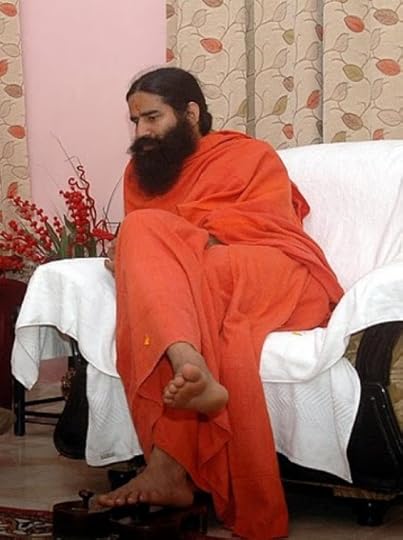
Spy 3 – Retired Soldiers – A Householder (Grihapaitika)
The third type of spies was the veterans of the army who now lived a civilian’s life. These spies formed their own network of informers who could give them information from time to time. These informants were common people of the village who would turn to a veteran for advice and support.
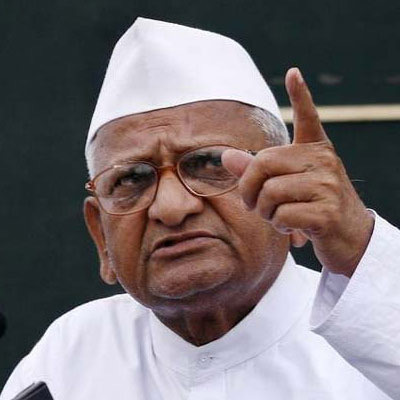
Spy 4 – Unsuccessful Trader/Businessman – A merchant (Vaidehaka)
Chanakya’s spies in the 4th category involved not so successful merchants and traders – These spies not only utilized their business travel to collect information about various things (including the discontent of the businessmen in their territory and outside), but also made a network of informers who could give them the required information. The King’s ministers should recruit such failed businessmen and should fund them and use them to be updated about the mood of the merchant class. However, the merchants are in general, an untrustworthy breed, and if such a spy is to turn hostile, he must be exiled immediately.

Spy 5 – Religious Leaders
The 5th type were basically religious monks made by the state.Their first job was to build an ashram outside the major urban areas. As mentioned, the objective of these ashrams was not spirituality but political reasons. These ashrams were built only to attract the local rich populace, so that they could influence them and even try to diminish the respect of any local religious leaders they had. The working of these spies was very dangerous but in the interest of the state. They had a network of informers who would tell them, both the strength and weakness of citizens. These secrets were then used for fortune-telling via palmistry. The religious leader would then predict calamity, accidents, mysterious deaths (obviously assassinations planned by the state themselves). He would even predict government awards and honors to specific person, which obviously were discussed between him, King and the ministers beforehand.
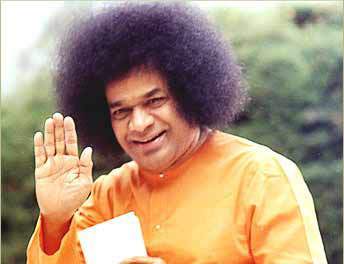
All these five types of spies were paid for their work in cash and comforts. However, the appointment was done mainly on the basis of their pure character and foresightedness.
The Arthashastra contains many articles of such type and is a must read!
Note: Oops!!! I think I used the wrong images!! Or didn’t I??? :p
Food for thought!!
Do read my book The Prince of Patliputra for a leap into the world of Mauryan politics in the times of Ashoka the great. It’s book trailer can be viewed here.
Do share this post if you liked it and give your valuable feed back. Cheers! Have a great day.


February 27, 2016
Mother’s crochet

My mother is a gynecologist and crochets as a hobby in her free time. Whenever her hands are not busy stitching up skin after cesarean sections, you’ll find them with long steel needles with threads creating everything from rugs to wall hangings to sweaters.
She retells that this hobby began early in her childhood, watching her mother (And my Grandma) do the same. She laughs when I ask why she does all this when she is such a loved doctor, and answers that technically, she was a crochet artist before she was a doctor. She jokingly calls it her first love.
She loves to crochet skirts and gift it to people she loves. She started out by making simple rugs, but now makes full knee lengths skirts. Really lucky are the girls who get them!
Slowly, the word starts spreading that ‘Bhave Ma’am’ makes beautiful midis. I observe her more and more at the needle these days.
“So many midis, mom?” I ask.
“Little Soumya asked me to make one for her.” She tells fondly. “I have to complete it before her wedding next month.”
Little by little, I see her buried under her crochet threads while she is at home. I pick up a call for her one day, when she is busy, conducting a complicated surgery. The message I get on the phone is bizarre. “Just ask ma’am has she completed my midi.” A voice asks.
More and more orders come for her from people who love her work. All of them want midis as their birthday gifts. I see my mother stitching a midi on the morning of her own birthday.
“You are a doctor!” I tell her again. “Stop all this! You don’t have time for yourself.”
But she just smiles and tells me that “They love my work. And I love to gift it to them.”
I watch as another call comes and she runs off to an operation. My mother is a very gentle creature and will never say this, but somewhere inside her, I sense these words.
‘We are artists. Not Laborers.”


February 11, 2016
The Characters
Here is a sneak peek at all the characters you shall find in The prince of Patliputra. Some of you must have already seen the book trailer and some would have even watched the Lore video that came after the trailer. What both of these videos did was give you a feel of the story world. It showed you the situation of the book, and how it would affect the characters. But none of it spoke in details about the characters of the book.
Well, characters are more important than the story. In the end, the reader develops an emotional connect with the characters and will not read on unless the persons they are reading about are relatable and interesting.
That is the power of characters in a book. So here I have created a sneak peek into the awesome personalities you shall find in The prince of Patliputra. These are not all of them, but enough to get you interested. ;)
MAIN CHARACTERS FROM THE PRINCE OF PATLIPUTRA
1]Alexander

Let me begin with Alexander the great, Shahanshah of Persia, Leader of the Greek Confederation and Blah blah. It is historical fact that he invaded India in the third century BC to attain his mission of world dominion. His invasion shall act as a major game changer in the book for the 50 years ago storyline..
2]Emperor Bindusar

Samrat Bindusar, as he is called in the book was the second ruler of the Maurya dynasty. He was the son of Chandragupta Maurya and father of Ashoka.( or Asoka as he is called in the book) He is dying due to an unknown disease as the book begins and his death shall plummet the realm into chaos.
3]Avarak- The one eyed

The Samrat’s failing health is a tragedy for the kingdom and opportunity for its enemies. For long, the men of Avanti have been oppressed by the rulers at Patliputra. Under the banner of their leader, Avarak, the one-eyed, they have risen in rebellion against the dying Samrat to proclaim their independence at their capital: The city of Ujjain. Avarak is known as a ruthless killer. It is said that he sends shadows to kill his enemies which basically means that he has under his wing assassins of the deadliest kind.
4]Asoka

Someone must take arms to fight Avarak’s rebellion in light of the dying Samrat to save the realm from chaos and disorder. Asoka must play that part. He has spent all his life in the army, without the love of his father, like a common born soldier. He is nothing as a prince should be and hence is the best man for this job.
5]Kanakdatta
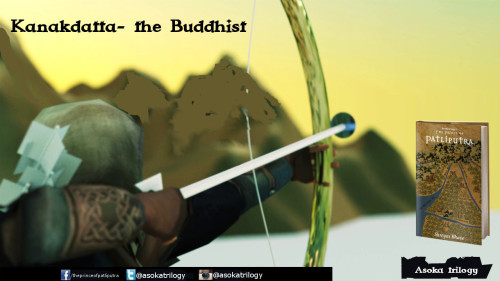
Asoka shall meet many persons on his way to Ujjain with his army and Kanakdatta or Kanaka will be one of them. Kanakdatta is perhaps the most dangerous man in the whole of Bharathvarsha. He has been everything from a smuggler to a soldier and is now the most powerful weapons trader of the land. Also, he is a Shabda-bhedi, which means that his arrow can hit its target even with his eyes closed.
6]Devi

She is the mystical lady of the woods. A master of poisons and their antidotes. indescribably beautiful! What is her role in Asoka’s life? IS she with him….or against him?
7}Hardeo: The guild master
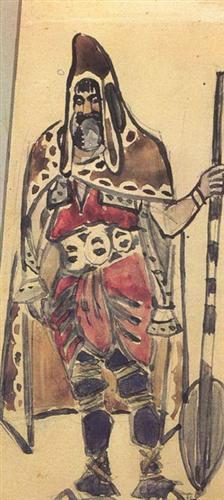
Heading the merchant’s guild of Vidishanagri, this man has sidelined the governor of the city and acts as a King itself in all manners. How long will his secret stay a secret? Will he really help Asoka or will turn out to be a double-crossing merchant?
8]Radhagupta: The Minister
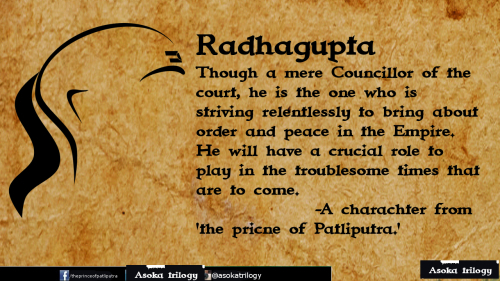
Though mere Councillor in Patliputra’s court, He is the one who is relentlessly striving to bring about Order and peace to the chaos riddled empire. He will be Asoka’s pillar of strength and will have a crucial role to play in the coming times.
The times are dire, and men (And women) of the story will have to test their mettle and go through trials.
Intrigued???
Well, sample chapters of the book are waiting at Amazon. :)
Do check them out…
Cheers.






